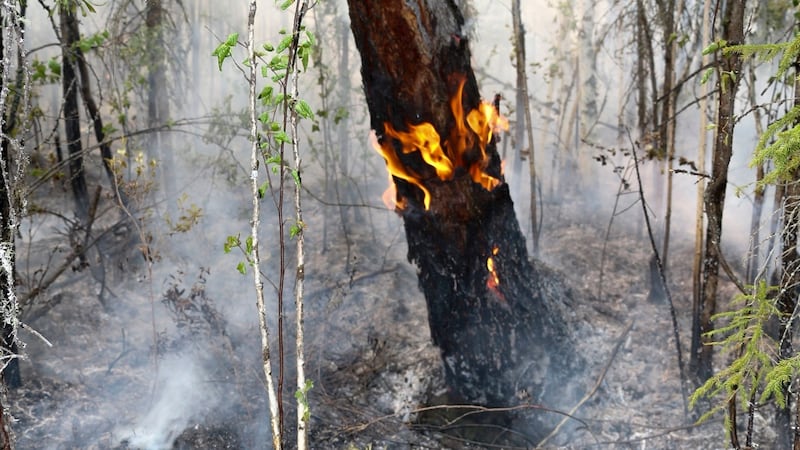A study reveals carbon dioxide emissions from forest fires have surged by 60 per cent globally since 2001, and almost tripled in some of the most climate-sensitive northern hemisphere boreal forests that stretch over vast areas of Alaska, Canada and Russia.
Further large increases in forest fires can only be averted if the primary causes of climate change, such as fossil fuel emissions, are tackled, it concludes.
The international study, led by researchers at the University of East Anglia (UEA) and published on Thursday in Science, grouped areas of the world into “pyromes” – regions where forest fire patterns are affected by similar environmental, human, land use and climatic factors.
In one of the largest pyromes, which spans boreal forests in Eurasia and North America, emissions from fires nearly tripled between 2001 and 2023. The vast majority of these forests are in cooler areas underlain by permafrost, and make up one of the world’s largest intact ecosystems. Their trees, along with vegetation underneath and soils, store vast amounts of carbon.
Owen Doyle: Chaotic cock-up cost Munster and it reflects badly on a number of people
Dublin-born Irish–American cardinal Kevin Farrell to run Vatican until pope elected
Pope Francis died of a stroke and ‘irreversible heart failure,’ the Vatican has said
New teachers will be fast-tracked into permanent posts to tackle staffing ‘crisis’
Significant increases in CO2 were seen more broadly across the extratropical forests and amounted to an additional half a billion tonnes of carbon per year, with the epicentre of emissions shifting away from tropical forests.
Increased emissions were linked to a rise in fire-favourable weather, such as the hot-dry conditions seen during heatwaves and droughts, as well as increased rates of forest growth creating more vegetation fuels. Both trends are aided by rapid warming in the high northern latitudes, which is happening twice as fast as the global average, it concludes.

The study indicates an increase in not only the extent of forest wildfires over the past 20 years, but also their severity. The carbon combustion rate, a measure of fire severity based on how much carbon is emitted per unit of area burned, increased by almost 50 per cent across forests globally.
“Increases in both the extent and severity of forest fires have led to a dramatic rise in the amount of carbon emitted by forest fires globally,” said Dr Matthew Jones, of the Tyndall Centre for Climate Change Research at UEA. “Startling shifts in the global geography of fires are also under way, and they are primarily explained by the growing impacts of climate change in the world’s boreal forests.”
“To protect critical forest ecosystems from the accelerating threat of wildfires, we must keep global warming at bay and this underscores why it is so vital to make rapid progress towards net zero emissions,” he said.
Forests are of worldwide importance for carbon storage, with their growth helping to remove CO2 from the atmosphere and reduce rates of global warming. They also play a crucial role in meeting international climate targets, with reforestation and afforestation schemes being implemented to remove carbon from the atmosphere and offset human emissions from hard-to-abate sectors such as aviation and certain industries.
The success of these schemes relies on carbon being stored in forests permanently, and wildfires threaten that. More widespread and severe forest fires are a sign that emissions are out of balance with the carbon captured by post-fire recovery, the study finds.
“The steep trend towards greater extratropical forest fire emissions is a warning of the growing vulnerability of forests and it poses a significant challenge for global targets to tackle climate change,” Dr Jones added. “We know that forests rebound poorly after the most severe fires, so there is huge interest in how the observed increases in fire severity will influence carbon storage in forests over the coming decades. This demands our close attention.”
Significantly, increased emissions from forest fires contrasts with the reduced burning of the world’s tropical savannahs during the same period. Previous studies found, since 2001, area burned by all fires (forest and non-forest) fell by a quarter globally, mainly due to this. Forest fires burn more severely and release larger amounts of harmful smoke, threatening those living near fires and more distant communities exposed to poor air quality caused by smoke.
- Sign up for push alerts and have the best news, analysis and comment delivered directly to your phone
- Join The Irish Times on WhatsApp and stay up to date
- Listen to our Inside Politics podcast for the best political chat and analysis














